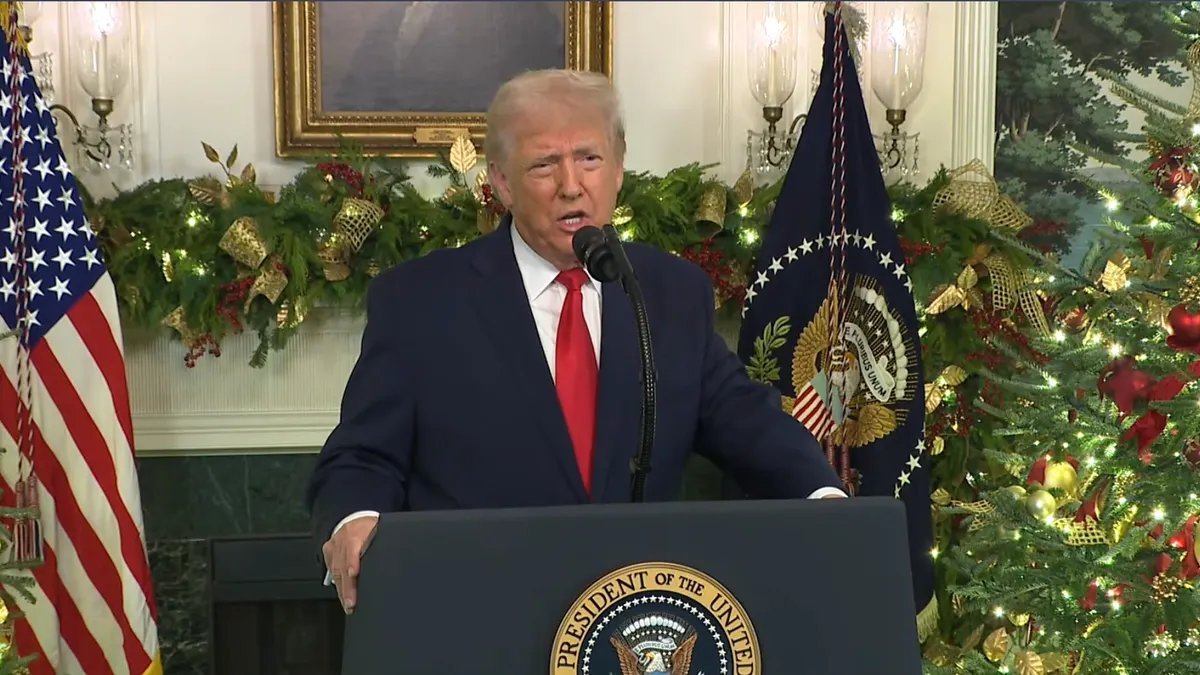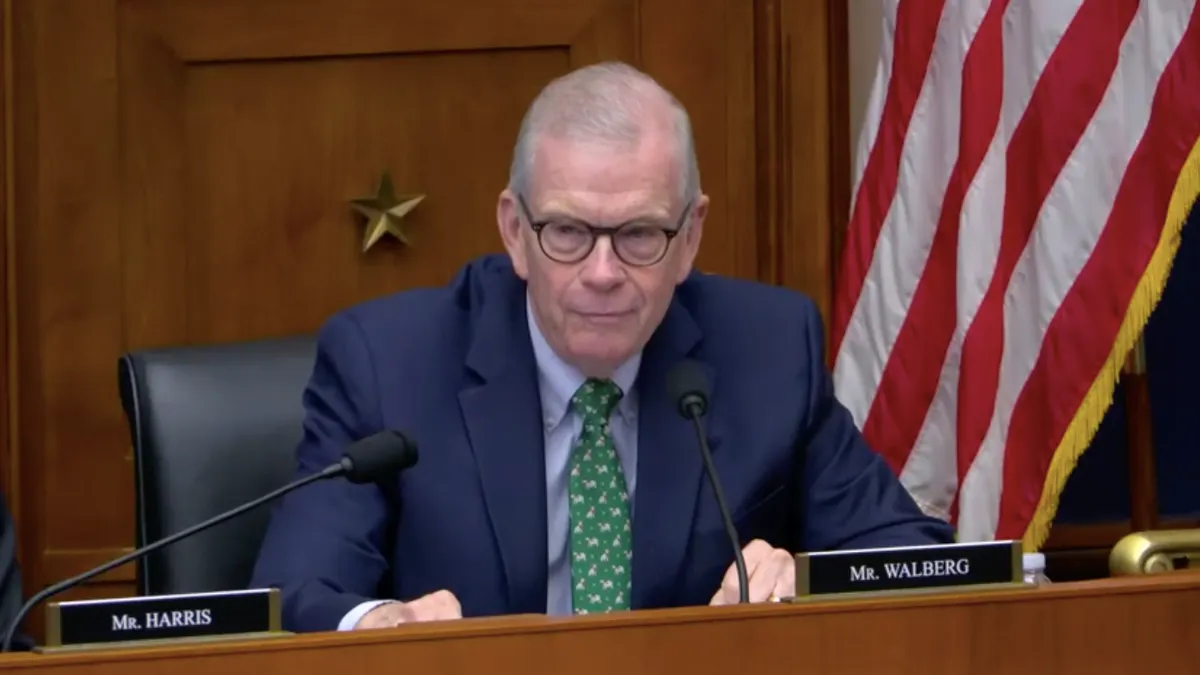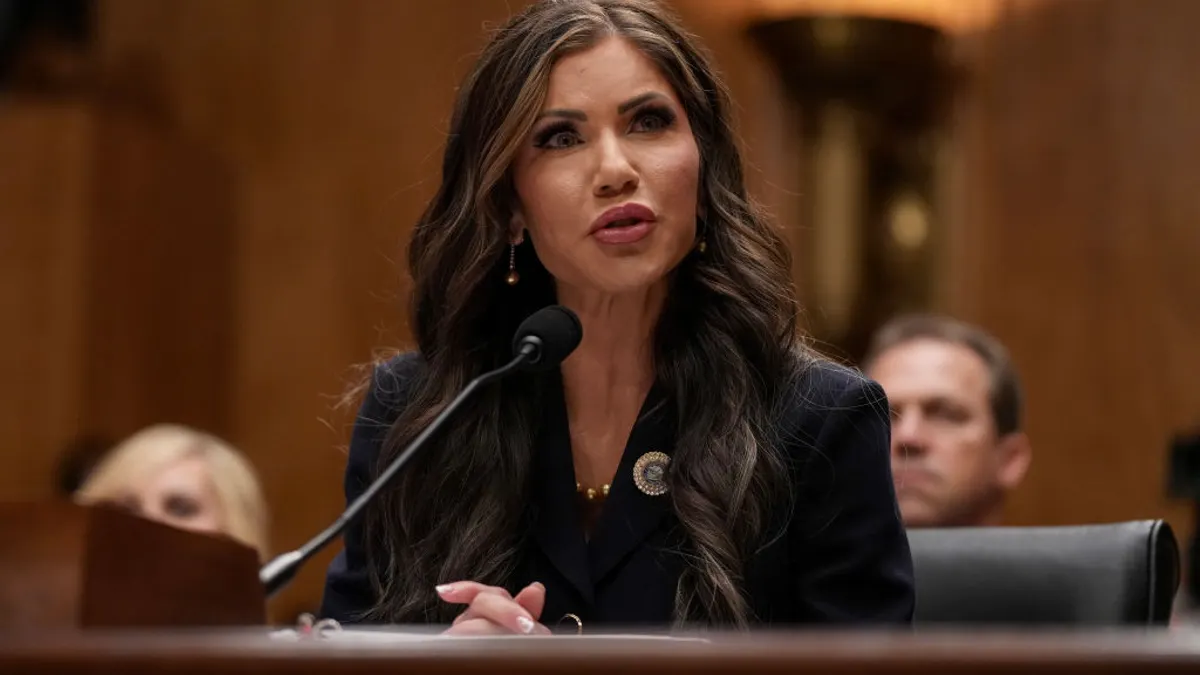School nutrition policies are among the initiatives taking center stage in the Trump administration’s “Make Our Children Healthy Again” strategy report last week, as it pointed toward the need to serve healthier meals to the nation's schoolchildren.
While school nutrition advocates generally back the Make America Healthy Again Commission’s intentions to address childhood chronic disease, they say time will tell as to whether the needed federal financial support will materialize to carry out those priorities.
The report, released Tuesday, calls for barring or limiting artificial dyes in food products and improving access to whole, healthy foods in school meals.
The report also blames the School Breakfast Program and National School Lunch Program for “compounding the issue” of children’s poor health by not limiting ultra-processed foods “leading to excessive intake of sugar, processed carbohydrates, processed fats, and sodium among children.”
In July, HHS, the Food and Drug Administration and the U.S. Department of Agriculture published a request for information as they develop a uniform definition for ultra-processed foods. The comment period ends on Sept. 23.
Having one federal rule defining ultra-processed foods or those with food dyes is important for ensuring the K-12 food supply industry doesn’t have to deal with a “patchwork of differing regulatory requirements” across the states, said Diane Pratt-Heavner, spokesperson for the School Nutrition Association.
As the Trump administration seeks to address concerns with ultra-processed foods in school meals, she said, any kind of federal regulation on that issue needs to be “operationally feasible.”
Currently, “schools just simply don’t have the capacity to scratch-prepare all of their meals,” Pratt-Heavner said, and “they do need to have access to pre-prepared foods that meet federal standards.”
Schools, meanwhile, are already working to meet new nutritional standards for school meals required under USDA regulations issued last year under the Biden administration.
Starting this fall, flavored milk can't have more than 10 grams of added sugar per 8 fluid ounces. By the 2027-28 school year, added sugar cannot make up more than 10% of calories a week in both school breakfast and lunch programs. Additionally, schools must decrease sodium by 15% in lunches and 10% in breakfasts beginning July 1, 2027.
“Schools are already making additional changes to the menu. If we're expecting them to make more, we really need the funding to support those changes, to invest in more staffing and equipment and ingredients,” Pratt-Heavner said.
Access to farm-to-school grants?
MAHA’s strategy report also calls for improving the farm-to-school grant application process so schools and local producers are more connected.
This, however, follows USDA's cancellation in March of the $660 million Local Food for Schools program.
That grant program had successfully helped districts build relationships with local farmers to procure fresh local food, said Mara Fleishman, CEO of the Chef Ann Foundation, a nonprofit focused on school food reform. Without the program, districts have had to scale down how much local produce they can buy, she said, adding that she'd like to see the program return.
Meanwhile, on Wednesday, USDA announced it is opening fiscal year 2026 applications for the Patrick Leahy Farm to School Grant Program. The $18 million awarded comes from a separate but similar program that’s also intended to connect farmers to child nutrition programs.
“Yesterday at the MAHA Report announcement, alongside Secretary Kennedy, we announced one of the key actions USDA has already taken to contribute to making our children healthy again — Farm to School Grants,” said U.S. Agriculture Secretary Brooke Rollins in a Wednesday statement. “These initiatives are one of the best ways we can deliver nutritious, high-quality meals to children, while also strengthening local agriculture.”
This year's Big, Beautiful budget law is expected to cause trickle-down effects that could get in the way of serving more free meals to students. Cuts to Medicaid and the Supplemental Nutrition Assistance Program are expected to limit school districts’ access to universal school meal programs through the Community Eligibility Provision and some statewide programs.
According to Fleishman, universal school meal policies should be a key priority for the MAHA commission. Increased reimbursements for free meals would allow school nutrition directors to fund priorities like more scratch meals, she said.
Other MAHA initiatives to watch
Along with school nutrition, the MAHA strategy report addresses these factors for K-12 leaders to keep an eye on:
- Federal vaccine framework. With the White House Domestic Policy Council, HHS will develop a framework to ensure “the best childhood vaccine schedule.”
- Presidential fitness test. HHS and the Education Department will work with the President’s Council on Sports, Fitness, and Nutrition to reestablish the Presidential Fitness Test in schools.
- Opioid overdose response. HHS will begin a national initiative to train staff in school-based health centers and public libraries to identify and respond to opioid overdoses. Participating sites will also receive a Naloxone supply funded by HHS.
- Screen time limits. The U.S. Surgeon General will create an education and awareness initiative about the impacts screens have on children as well as states’ efforts to reduce screen time in schools.
- School awareness campaigns. HHS, USDA, the U.S. Department of Education and the president's fitness council will partner with states and schools on a Make American Schools Healthy Again awareness campaign to include best practices for increasing physical activity and improving nutrition.





















